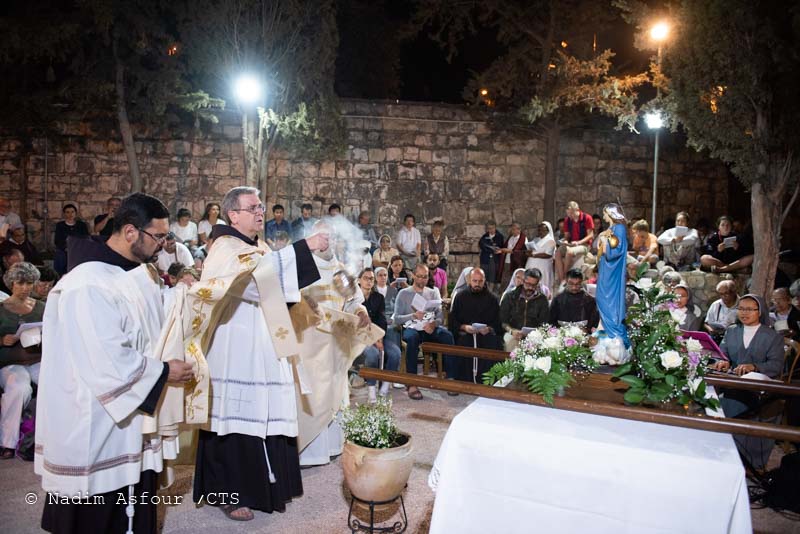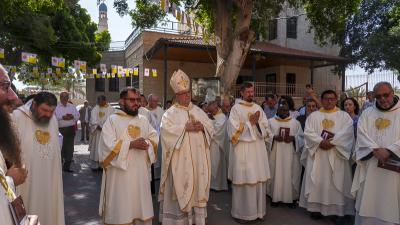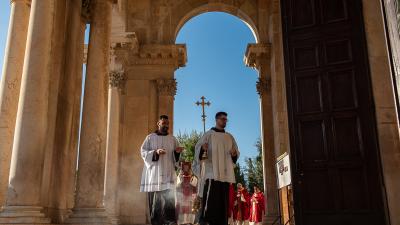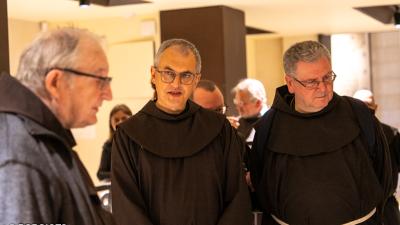
The feast of the Assumption of Mary began with a vigil in the Garden of Gethsemane. The life of Mary was recounted by reading passages from the Gospels and was then came the moment of the Virgin’s transition, remembered with an apocryphal story. Among the excitement of the numerous pilgrims, among the songs sung by the friars of the Custody of the Holy Land, the statue of Our Lady arrived in a procession through the Garden of Gethsemane up to the Basilica of the Agony. Then, an excerpt from the Transito Romano was read.
On August 15, the church in the Basilica of the Agony was again crowded with faithful for the celebration of the mass. The Assumption is a very important feast in Jerusalem and the locals have a great devotion to Mary. Then a procession started from Gethsemane and went to Mary’s Tomb, where representatives of the Greek Orthodox and Armenian communities were waiting. Singing to the Virgin, one by one, they all knelt before the Mother of Jesus.
According to the Status Quo, it is the only time a year that the Franciscans can officially make this procession to this place.
The feast of the Assumption has ancient origins, so much so that in the fifth century it was mentioned on August 15 at the Kathisma church. What was celebrated was the kathisma, or the 'rest' of Mary, who was about to give birth, and who was on the way to Bethlehem, was celebrated, but the possibility is not excluded that this “rest” could also point to the eternal one. Subsequently, the liturgical assembly to commemorate the Assumption was held at Gethsemane and from there two different traditions came about, because at the kathisma they moved the festivity to August 13. The tradition that became the most widely accepted was the one that placed the feast on August 15—but it wasn’t until 1950 that Pope Pius XII proclaimed the Assumption of Mary as a dogma of the faith.




